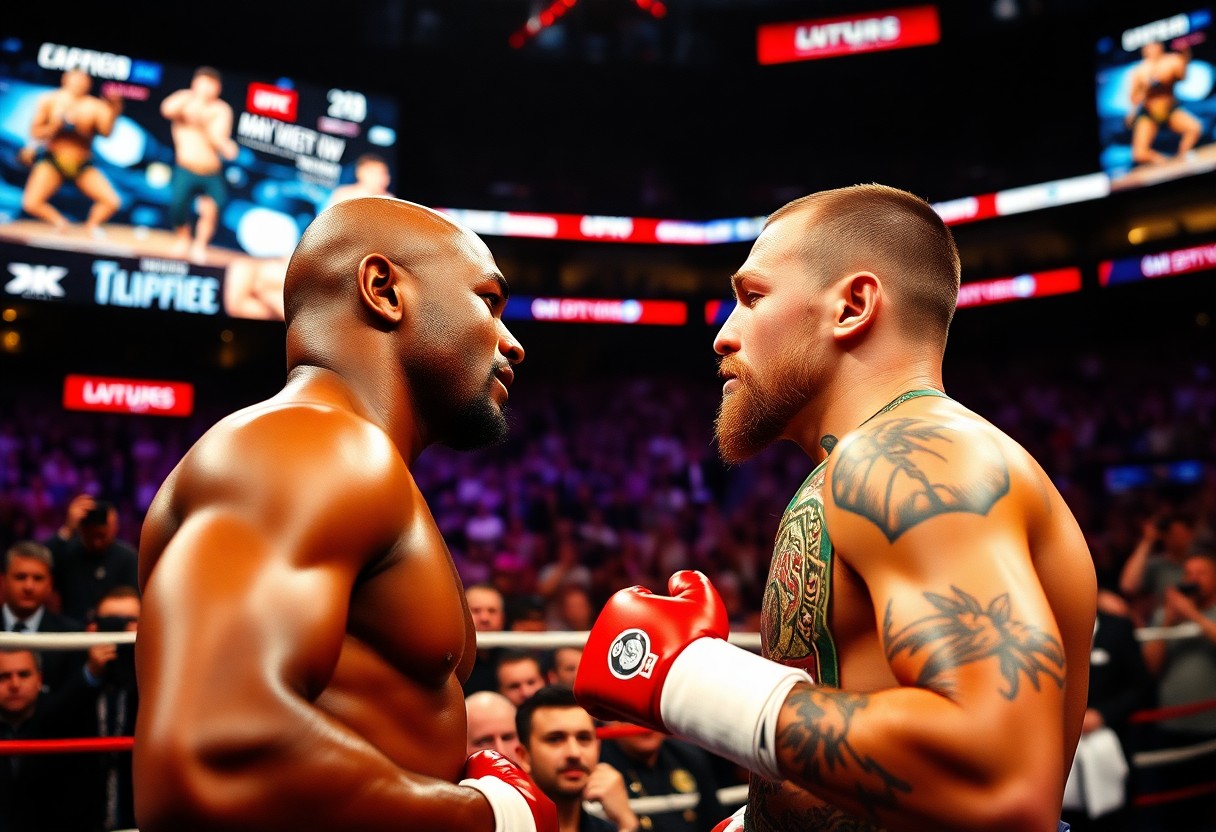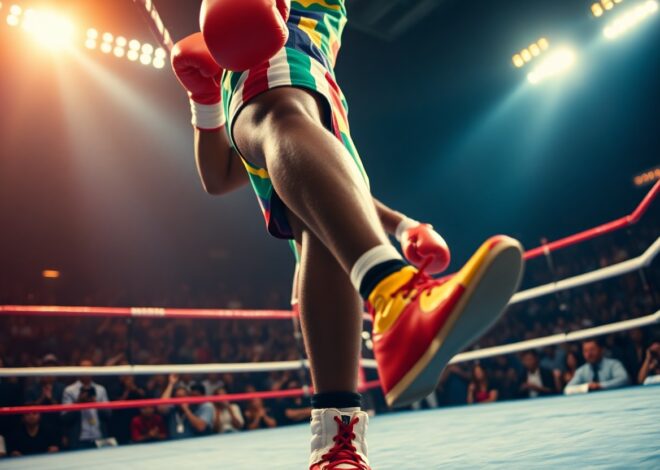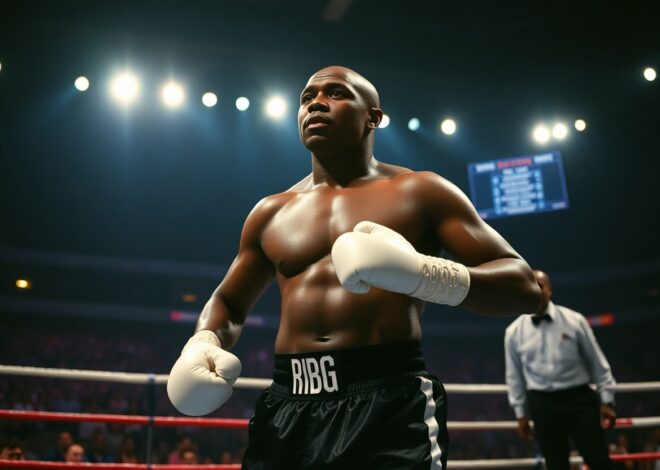
Floyd Mayweather Vs. Conor McGregor: How The Hype Changed Pay-Per-View History?
Just when the world thought they had seen everything in combat sports, the highly publicized showdown between Floyd Mayweather and Conor McGregor took center stage, shattering pay-per-view records and altering the landscape of sports marketing. This unprecedented event not only showcased the unique blend of boxing and mixed martial arts talent but also harnessed the power of social media, leading to an explosive financial success that set new standards in the industry. The fight’s sensational buildup and aftermath provide key insights into how hype can redefine sporting events forever.
Background of the Fighters
Both Floyd Mayweather and Conor McGregor emerged from distinctively different worlds of combat sports, bringing their unique styles and polarizing personas to a historic showdown that reshaped the landscape of pay-per-view events.
Floyd Mayweather’s Career and Achievements
With a flawless record of 50-0, Floyd Mayweather solidified his legacy as one of boxing’s greatest. He captured world championships in five weight classes and is renowned for his defensive prowess, unmatched ring intelligence, and ability to adapt to opponents. Mayweather’s bouts not only attracted massive audiences but also generated significant revenue, showcasing his drawing power as a pay-per-view star.
Conor McGregor’s Rise in MMA
Conor McGregor’s trajectory in MMA is one of the most remarkable tales, skyrocketing from local promotions to becoming the first fighter in UFC history to hold titles in two weight divisions simultaneously. His blend of charisma and skill captivated fans, allowing him to transcend the sport and propel mixed martial arts into the mainstream spotlight.
Debuting in the UFC in 2013, McGregor quickly made waves with his knockout power and trash-talking ability. He captured the UFC Featherweight Championship in 2015 and followed it up by earning the Lightweight Championship in 2016, establishing his status as a global icon. Leading up to the Mayweather fight, McGregor’s unique personality and ability to connect with fans elevated his profile, making him one of the most talked-about athletes in the world.
The Build-Up to the Fight
The anticipation surrounding Mayweather vs. McGregor reached unprecedented levels as promotional efforts intensified, blending traditional boxing hype with the flair of MMA. Each fighter leveraged their unique personas to create a narrative that captivated audiences, positioning the bout as not just a fight, but a cultural event. Fans flocked to every press conference and appearance, fueling speculation and excitement, which significantly impacted ticket sales and pay-per-view subscriptions.
Promotional Strategies and Media Coverage
Promoters employed a mix of traditional and new-age marketing techniques that transformed the fight into an international sensation. Mayweather Promotions and UFC collaborated to maximize exposure through relentless media coverage, celebrity endorsements, and an elaborate world tour. This tour featured extravagant showdowns and verbal sparring, generating headlines and boosting viewership as millions tuned in to witness the unfolding rivalry.
Fan Engagement and Social Media Impact
Engagement soared as fans utilized social media platforms to voice their opinions and rally support for their favorite fighter. Hashtags like #MayweatherMcGregor trended globally, reaching over 10 million tweets in the days leading up to the event. The interaction spurred memes, videos, and fan art, creating a community around the fight that extended beyond traditional fanfare.
This digital engagement enabled fans to play an active role in the promotion, reshaping the way fights are marketed. Platforms like Instagram and Twitter allowed both fighters to connect directly with audiences, sharing training clips and personal messages that humanized their personas. The combination of viral content and consistent interaction attracted younger demographics, leading to over 4.4 million pay-per-view buys, smashing records and solidifying the fight as a landmark event in sports history.
Pay-Per-View Trends Prior to the Fight
Pay-per-view (PPV) events experienced significant growth leading up to the Mayweather vs. McGregor showdown, with both boxing and MMA carving out substantial fanbases. Historical trends indicated that major boxing events consistently drew large audiences, while mixed martial arts gained traction, particularly with stars like Ronda Rousey and Conor McGregor. This era witnessed increasing competition between the two sports for viewer attention and market share.
Historical Data on PPV Buys
Prior to the fight, the highest-grossing PPV event was Mayweather vs. Pacquiao in 2015, which generated an astounding $400 million through 4.6 million buys. However, PPV numbers were beginning to plateau as newer platforms and viewing options emerged, causing promoters to seek innovative ways to capture audiences.
Shifts in Audience Preferences
Shifts in audience preferences were evident as fans increasingly gravitated toward more engaging, personality-driven content rather than solely traditional sports narratives. This transition fostered a desire for crossover events that blended boxing and MMA, appealing to a diverse viewer demographic eager for novelty and drama.
As fights evolved into entertainment spectacles, the appeal of charismatic fighters like McGregor played a pivotal role in changing how audiences perceived combat sports. His brash persona and promotional style captured the imagination of millions, while Mayweather’s undefeated legacy provided a compelling antagonist. In the lead-up to their match, social media buzz and promotional tours elevated interest, demonstrating a growing trend where personality farther than mere sport influences PPV buys. This heightened engagement from consumers set the stage for unprecedented viewership and generated discussions that transcended sports culture, making the event a cultural touchstone.
The Fight Night Experience
The fight night experience for Mayweather vs. McGregor was unlike any other, combining electric atmosphere, celebrity attendance, and high-stakes drama. Fans packed the T-Mobile Arena in Las Vegas, while millions tuned in globally, creating a palpable buzz that resonated throughout the event. This duality of live and remote engagement highlighted the fight’s significance, as mainstream media covered not just the fight itself but the entire spectacle surrounding it, turning the night into a cultural phenomenon.
Anticipation and Viewership Figures
Viewership figures soared ahead of fight night, with expectations predicting around 4.6 million PPV buys, eventually leading to a staggering estimated revenue of over $600 million. The unique crossover appeal of McGregor, coupled with Mayweather’s unblemished record, heavily contributed to the hype, allowing the event to shatter previous records in the boxing and MMA industries. Fans from both worlds flocked to witness the collision of styles and personas, creating a once-in-a-lifetime spectacle.
Analysis of the Fight’s Dynamics
The dynamics of the fight revealed a fascinating contrast of styles and strategies. Mayweather’s defensive mastery showcased his boxing prowess, countering McGregor’s unorthodox approach and striking capabilities. McGregor attempted to utilize his reach and agility, but Mayweather’s experience allowed him to effectively avoid significant damage while executing calculated counters. This tactical chess match illustrated the remarkable differences between traditional boxing and mixed martial arts, further intensifying the viewer experience.
Financial Implications of the Event
The financial ramifications of the Mayweather vs. McGregor event were staggering, reshaping the landscape of combat sports. The fight generated a record-breaking $550 million in revenue, with over 4.3 million pay-per-view buys. This monumental success not only invigorated the boxing market but also set a new benchmark for future events, influencing promotional strategies across the industry.
Earnings for Fighters and Promotions
Both fighters reaped enormous rewards, with Floyd Mayweather reportedly earning around $300 million and Conor McGregor pocketing approximately $130 million. Promotions, including UFC and Mayweather Promotions, also saw substantial revenue boosts, thanks to the historic PPV sales and lucrative sponsorship deals. This financial windfall underscored the profitability of crossover events between different combat sports.
Impact on Future Fights and Promotions
The aftermath of Mayweather vs. McGregor heralded a shift in the promotional landscape, inspiring more cross-discipline fights and celebrity matchups. This paradigm shift encouraged promotions to explore unconventional pairings, understanding that fan interest could be piqued by high-profile figures, regardless of their primary sport. As a result, events like Logan Paul vs. Floyd Mayweather emerged, further catering to the blended audience of traditional sports fans and new-age entertainment followers.
Subsequent events capitalized on this trend, leading to multimillion-dollar bouts featuring personalities outside of traditional athletics. Promotions began prioritizing spectacle alongside sport, resulting in a surge of celebrity-driven fights. Additionally, the willingness of organizations to negotiate crossover agreements has opened up lucrative opportunities for fighters, making it more common for stars to compete across various platforms. The Mayweather vs. McGregor fight not only redefined pay-per-view success but also transformed strategic approaches to event marketing and fighter expectations in an increasingly interconnected entertainment economy.
Legacy of Mayweather vs. McGregor
The legacy of Mayweather vs. McGregor extends beyond the ring, fundamentally altering the landscape of combat sports. This megafight created a unique fusion of boxing and MMA, attracting a diverse audience and generating over 4.3 million pay-per-view purchases. The event established benchmarks for monetary expectations, shifting how promotions approach fight marketing, star power, and fan engagement.
Changes in Combat Sports Pay-Per-View Models
The Mayweather vs. McGregor showdown prompted significant shifts in pay-per-view models, particularly in revenue structures and promotional strategies. With a spectacular $600 million in revenue, it showcased the viability of cross-promotion, leading more organizations to explore hybrid events that leverage star power to maximize profits.
Influence on Future Cross-Sport Fights
Mayweather vs. McGregor opened the floodgates for future cross-sport competitions, demonstrating the lucrative potential of well-matched fighters from differing backgrounds. High-profile athletes from various sports began to consider matches that capitalize on their fame, illustrated by the subsequent bouts involving MMA fighters transitioning to boxing and vice versa, forging new roads for talent and business opportunities.
This trend continues to gain momentum, as combat sports promotions increasingly seek cross-pollination between disciplines. Promoters are now more willing to host events featuring beloved athletes from different sports, mirroring the success seen with the Mayweather vs. McGregor fight. The allure of big paydays attracts not just fighters but also brands eager to capitalize on mixed audiences, thus multiplying chances for similar matches in the coming years and solidifying a new precedence in the industry.
Conclusion
With this in mind, the Floyd Mayweather vs. Conor McGregor bout not only set a record for pay-per-view sales but also transformed the landscape of combat sports marketing. This event showcased the power of effective promotion and crossover appeal, capturing mainstream attention and engaging diverse audiences. As a result, it redefined expectations for future matchups, significantly influencing how promoters approach fighter branding and viewer engagement in the era of digital media.
FAQ
Q: How did the fight between Floyd Mayweather and Conor McGregor impact pay-per-view sales?
A: The fight garnered unprecedented pay-per-view sales, becoming one of the highest-grossing events in history. It exceeded 4.4 million buys in the U.S. and generated over $600 million in revenue, demonstrating the crossover appeal of both fighters and the effectiveness of their marketing strategies.
Q: What marketing techniques contributed to the hype surrounding Mayweather vs. McGregor?
A: A combination of social media campaigns, press tours, and engaging promotional events created immense visibility. Both fighters leveraged their personal brands and rivalries, with Mayweather’s showmanship and McGregor’s charisma attracting fans from different sports, thus enhancing interest in the event.
Q: Did the success of this event influence future pay-per-view broadcasts?
A: Yes, the success of Mayweather vs. McGregor set a new standard for pay-per-view events, pushing promoters to adopt similar promotional tactics. It encouraged more high-profile cross-sport matchups and elevated the importance of building narratives and rivalries in the lead-up to fights, aiming for similar financial success.



